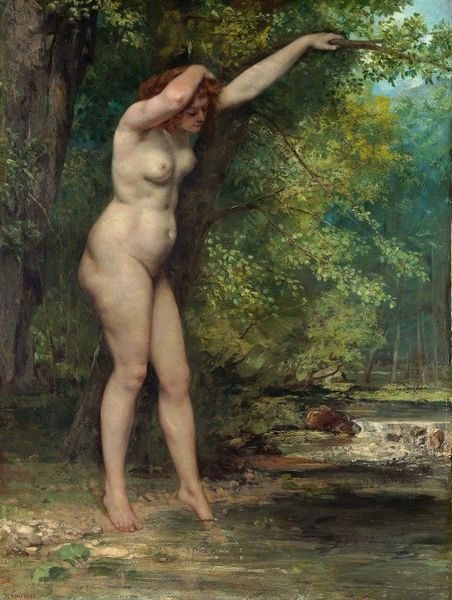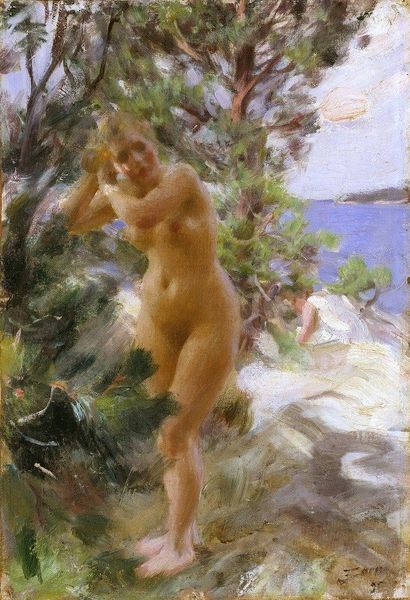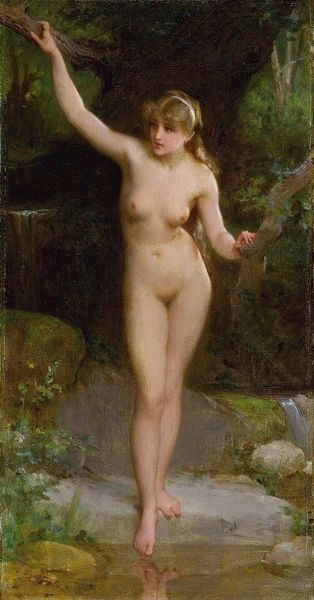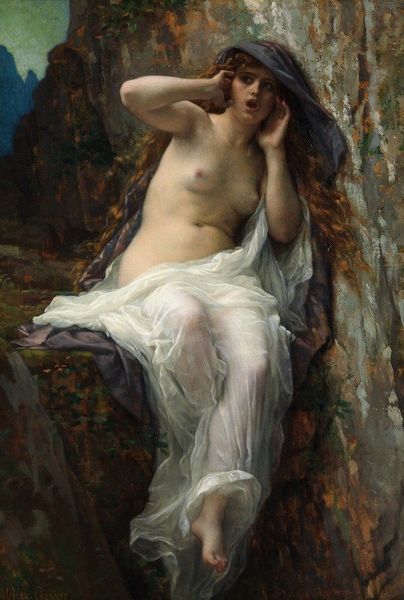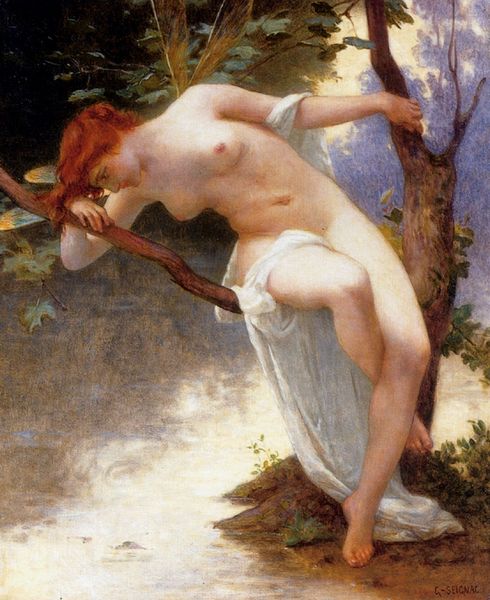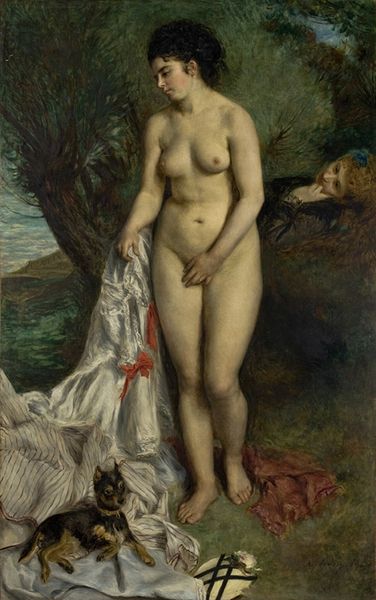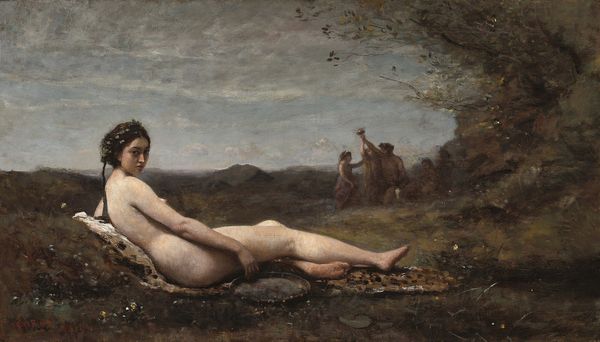
painting, plein-air, oil-paint
#
portrait
#
figurative
#
painting
#
impressionism
#
plein-air
#
oil-paint
#
landscape
#
figuration
#
oil painting
#
history-painting
#
nude
#
portrait art
Copyright: Public Domain: Artvee
Editor: This is Renoir’s "Diana," painted in 1867. It's an oil painting, depicting the goddess Diana after a hunt. There’s something unsettling about her placid expression against the backdrop of this…well, frankly, rather dead deer. What are your initial thoughts on this piece? Curator: My attention is immediately drawn to the loaded symbols embedded in this imagery. We have Diana, goddess of the hunt, of wild animals and the wilderness. In this piece, what emotional narratives can we uncover between her identity, the stag, and the bow she's holding? Editor: It feels like there’s a strange disjunction. She’s a powerful huntress, but there’s a softness to her face, almost resignation. Curator: Indeed. Her posture almost lacks the confidence one might expect. Her downward gaze suggests an introspective quality, a pondering of the cycle of life and death. Think about it: What’s the resonance of the bow—both a tool of life and death, of survival and dominion? Editor: So, it’s more than just a literal depiction of a huntress? Curator: Absolutely. Diana represents more than skill with the bow; she is a figure of independence and power, yet even a goddess cannot escape the burden of existence. She stands amidst an act that sustains and destroys. The landscape itself becomes an emotional reflection. How do the colors inform the painting's central themes? Editor: I guess I didn’t really consider that the greens and grays could symbolize more than just a forest! It makes you think about the nuances of this piece beyond face value. Curator: Exactly! The subdued tones could mirror the heaviness of responsibility, a reflection of both the hunter and the hunted. There’s a powerful interplay between these ancient symbols and our contemporary understanding of existence. Editor: I'll definitely look at Renoir's work differently from now on. The depth of symbolism brings so much more to it than initially meets the eye.
Comments
No comments
Be the first to comment and join the conversation on the ultimate creative platform.






